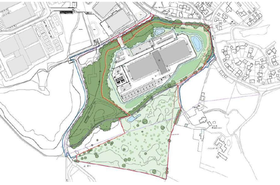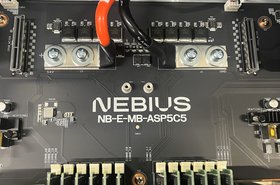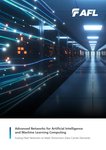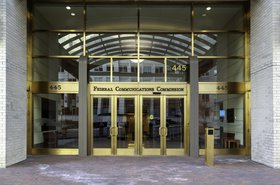To some, the Nokia brand evokes memories of mobile phones, in particular, the 3310 of the late 1990s and 2000s with its iconic ringtone and addictive ‘snake’ game.
Having lost its mobile market dominance after the dawn of the smartphone era, the company has become best known for producing network hardware and software for mobile carriers across the world. It is one of the world’s biggest network vendors, competing with Nordic rivals Ericsson and Chinese giant Huawei.
But in 2025, it appears that Nokia wants to be seen as something else too. The vendor wants to become a provider of data center solutions and products.
“Where the growth is happening today is on the data center side,” Vinai Sirkay, head of business development for Nokia, told DCD earlier this year.
“Whether it’s inside the data center with switching, or between data centers, both at the IP layer to connect it to the Internet, or just connecting data centers to each other through IP and optical interconnectivity. We are doubling down there.”
As technology such as generative AI continues to grow, there is a requirement for more data centers to support the demands placed on these technologies.
For Nokia, the data center opportunity is too good to ignore.
Data center-focused CEO
It’s worth noting that Nokia’s data center strategy stretches back to 2020. In July of that year, amid the turbulence of the Covid-19 pandemic, the vendor launched a new network hardware range to automate and simplify data center operations.
This year, Nokia appointed Intel data center executive Justin Hotard as its CEO to replace long-term CEO Pekka Lundmark, who previously stated last year that Nokia sees a “significant opportunity” to expand its presence in the data center market. Hotard’s appointment suggests Nokia means business on this front.
Hotard only spent around a year in the role at Intel, where he was responsible for Intel’s suite of data center products spanning enterprise and cloud, including its Xeon processor family, graphics processing units (GPUs), and accelerators for servers.
Before that, Hotard spent an eight-and-a-half-year stint at HPE, where he most recently served as executive vice president and general manager of High Performance Computing, AI, and labs for the US tech firm.
His experience and knowledge of data centers and subsequent appointment at Nokia is not a coincidence.
Infinera acquisition
Hotard joining the company in April is rather timely too, as it came around a month after the company finalized its $2.3 billion acquisition of networking firm Infinera.
“This acquisition [Infinera] brings a number of significant benefits,” Hotard told analysts during his first earnings call at the company in April. “It gives us the scale to accelerate our product roadmaps and to drive more innovation.
It also increases our access to hyperscale customers, which are a key growth driver in both cloud and AI data center investments.”
During the Optical Fiber Conference (OFC) held in San Francisco in early April, Nokia wasn’t quiet about its acquisition of Infinera, with its advertising on full show everywhere you looked, along with Infinera’s stand, which celebrated the union.
It made sense too, given the event focuses on optical networking, and the purpose of the deal was to expand Nokia’s presence in the data center interconnect space and in the US.
“Our multi-billion dollar acquisition has given us a big step forward because the Infinera team has done a really good job in building a strong customer footprint with the big web companies and web-scale companies,” Manish Gulyani, head of marketing for Nokia’s Network Infrastructure business, told DCD during OFC, weeks after the deal was completed.
For the full year of 2024, Infinera posted record revenue with webscalers, noting that its total revenue exposure (direct and indirect) was greater than 50 percent of its full-year revenue.
“That gives a very good footprint for people who are building these big data centers for cloud and for AI workloads,” added Gulyani, referring to Infinera’s financial performance.
“So that’s already there, but we’ll build on that our technology. That technology really gives us all the elements we need to really pursue it from an optical perspective, and on the IP side.”
According to Gulyani, Nokia plans to invest in driving more data center switching and routing solutions into the data center space, plus increasing investment on the IP side.
Nokia’s data center offering
Nokia is “not in the business of building data centers,” Sirkay says, but rather providing the equipment that goes inside them.
It offers networking infrastructure, routers, and switching products as part of its data center suite, and has penned notable switching deals with Microsoft and Apple, with the iPhone maker being one of the first to deploy the switching platform back in 2020.
In the past year, Nokia has struck further data center-focused partnerships. Most recently, it was selected by American Tower-owned CoreSite to provide routing upgrades for CoreSite’s data center footprint across the US.
In November 2024, Nokia extended its existing agreement to supply Microsoft Azure with data center routers and switches. A month later, Nokia, along with ITSP Kyndryl, announced plans to offer advanced data center networking solutions and services to global enterprises.
Last year, Nokia also launched a data automation platform, which it describes as an “event-driven automation” (EDA) platform.
“Some will buy directly from us like the hyperscalers, while some want us to be part of a solution,” added Sirkay.
All roads lead to AI
The growth around Artificial Intelligence (AI) has been a key reason for Nokia’s excitement around data center interconnectivity.
AI is demanding that data center infrastructure is in place to support the workloads that are being used and the networks that are carrying these workloads.
Federico Guillen, president of network infrastructure at Nokia, remarked at OFC that “AI is the lifeblood of the network.”
While Subho Mukherjee, vice president & global head of sustainability, Nokia, told DCD earlier this year that “AI has been a once-in-a-generation catalyst for data center boom.”
Nokia sees AI as an opportunity to support data centers with its own products, such as switches.
“The way I think about the market in AI, particularly with optical is, if you look at the build-out of the data center, what’s happening with AI is it’s driving, as we all know, significant new data center build, but it’s also driving new connectivity demands between data centers, both whether it’s for training or inference or some of the convergence we’re seeing with AI reasoning models,” Hotard stated during the company’s Q1 earnings call.
Networking for AI
As more data centers are needed to keep up with the demands for AI use cases and workloads, networking is essential to support this.
Companies such as GPU giant Nvidia have dominated the discussion around the build-out of these data centers, as the industry focuses on the compute hardware required to deal with the AI boom.
However, as Gulyani points out, the networking aspect of these build-outs is every bit as important and plays into Nokia’s expertise.
“Our investment to build infrastructure to house compute for AI is just massive, and as driving not just larger data centers, but more data centers everywhere, because that’s kind of driven by both where you can get the infrastructure,” says Gulyani.
“You’re getting more and more distribution of data centers, and we don’t spend much time talking about the network piece of it, because people focus on GPUs and the other things you need to build those monster supercomputers. But you need networking inside the data center too.”
When asked about why the data center opportunities excite Nokia, Gulyani speaks of the chance to support businesses meet the demands of AI.
“Switching, routing, interconnect. These are the three legs of our solution,” he says. “All of them have massive addressable markets with new, innovative solutions required to meet the needs.
“What we had till the last generation was good enough for non-AI workloads, but with AI, it’s creating another sort of requirement around higher performance, more resilience, more security.”
Beyond its bread and butter
For Nokia, don’t expect the data center focus to usurp its bread and butter offering, which is its radio access network (RAN) products.
The vendor will be hoping that its Infinera deal will boost its opportunities in the US, where it’s found life difficult in recent years, notably missing out on lucrative 5G RAN deals with AT&T and Verizon to Ericsson and Samsung Networks, respectively. That said, the company did strike gold with the country’s third major operator, T-Mobile, recently. Emerging technologies such as 6G are also central to the company’s future plans, with R&D efforts well underway.
However, in the short term, its data center play will provide an opportunity for Nokia to diversify its revenue streams beyond telecom carriers.
“Nokia has two sides, the service provider business and now the data center business,” explains Gulyani. “The telecom business is strong. We are number one or number two in almost all markets.
“But now there is the cloud networking business, essentially connecting all clouds to each other and eventually to the end users. So that’s where we are adding increased focus within Nokia is regarding the connectivity to anybody who plays.”
He points out that this could include cloud companies, data center hosting firms, colocation providers, and other companies in the ecosystem.
“There’s a lot of players in the ecosystem that are providing connectivity that need connectivity solutions. We want to be working with anybody in that ecosystem that can take advantage of the same solutions,” says Gulyani.
RAN might be the bread and butter, but Nokia certainly has an appetite bigger than what the telecoms industry is serving up. The vendor sees the demand for data centers and wants a slice of that growth.
Read the orginal article: https://www.datacenterdynamics.com/en/analysis/nokia-ai-and-data-centers-an-opportunity-too-good-to-ignore/











